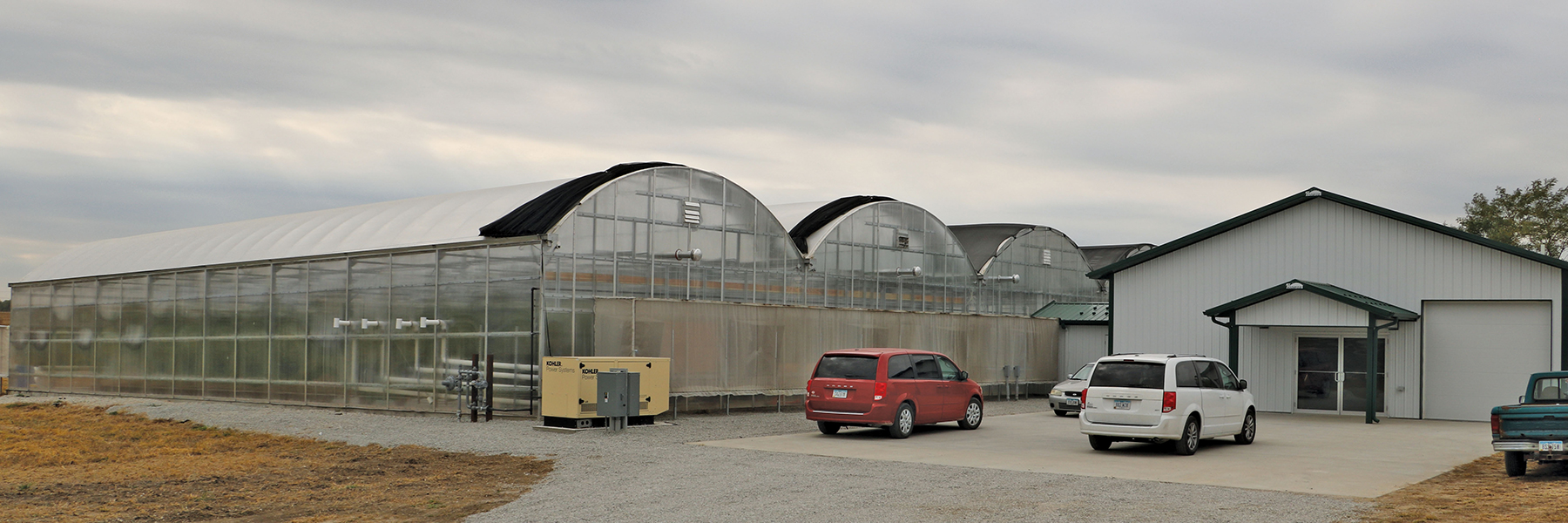Prepping The Farm for Winter: Field and Greenhouse Production
Oct. 3, 2017
The leaves are changing, the nights are getting crispy and it is never too early to start preparing for next season. With a few slow weeks approaching, late fall is a great time to begin all of the work that goes into the production season. Taking inventory, ordering supplies, winterizing irrigation and amending soils are among the major ways farmers can prepare their operations for snow covered fields. With a few weeks left until the fear of frost, now is the time to get to planning and cleaning so that spring time start up is a breeze.
Take this time to take inventory of materials that will be needed during the production season, like seeds, potting soil, fertilizer and tools. This is also an ideal time to create crop plans and order seeds. Having time to plan out each crop will help lower stress levels of anticipating the upcoming season. Farming vegetables is a high risk and stressful job; one never knows what crop might fail or what pest will show up for dinner. Planning early leaves growers enough time to receive notification from seed companies about failed seed stashes that are discovered after they’ve been sent out so that growers can adapt and alter their crop plans.
Just because they are sleeping, it doesn’t mean that the fields should be ignored over the winter. One of the best practices to get started in the fall is cover cropping with crops like rye, vetch, mustard or clover to replenish depleted soils. Cover cropping ensures that come springtime, the beds are ready to be tilled and planted and won’t need as many amendments at the beginning of the season. Be sure to take a bunch of soil samples from different parts of the field to determine the soil profile, including which nutrients are depleted, the acidity of the soil and recommendations for micronutrient amendments. Different crops can prefer different soils, so become familiar with specifications of the crops being grown. Different cover crops add different nutrients to the soil, and it is wise to become knowledgeable about what cover crop mixture is best for specific profiles. Come spring, till the cover crop into the soil, get another soil test done and adjust additional amendments, like bone meal, blood meal and lime.
Rainfall is unreliable at best, so a good irrigation system is one of the most obvious pillars of a successful field operation. Winterizing the irrigation system is a vital part of closing down shop during the winter on a farm. Not only can burst pipes cause damage to frozen over buildings, but they can go unnoticed in a field which makes for annoying rushed repairs during the time when growers should be planting. Before the deep freeze, be sure to drain systems as well as possible and protect irrigation materials from winter weather and spring tilling, as it is very frustrating to replace drip tape every year when the rototiller tears it up by accident.
If field operations halt for the winter, many growers utilize a greenhouse to continue bringing in revenue during the slower season. When preparing the greenhouse for winter, first and foremost be sure to have installed an efficient heating system. This is not a difficult process and can be done on a budget for any scale greenhouse. Of course, GrowSpan can offer help create an ideal heating setup for any greenhouse. One of the major benefits to GrowSpan Structures is the expert design team that can plan out a heating system within minutes and help guide growers toward installation practices and growing tips if needed.
Just because production continues inside of a greenhouse, it doesn’t mean growers should feel it is time to slack on cleaning. Spending a good week in the fall cleaning surface areas, bins, trays and pots will drastically reduce the possible occurrence of disease, mold and pests which are attracted to unclean environments. During this time, check any mechanical accessories necessary for winter production, like ventilation systems and heaters to make sure they are in good shape and ready to put in long hours. Be sure to insulate sides that do not bring in sunlight and heat by using a double plastic covering with a blower in between the layers, and bulk up the perimeter with straw bales to minimize infiltration and heat loss.
With all of the repairs, cleaning and seed orders, growers can find plenty to do to prepare for winter, whether they are putting fields to bed or moving production into a greenhouse. One of the benefits of slower times is the ability to reflect on the seasons that have passed and address challenges previously faced in order to figure out better ways to grow next year. The more growers can learn from mistakes and set goals, the easier work and progress can be in a grow operation. Put these practices to the test this autumn and lighten the springtime workload next season.
Find out more about GrowSpan’s greenhouse solutions.
Contributed by Amanda Williams

